HELP! Why am I killing my Begonias???
I just bought a house and have always wanted to have a lavish garden and test my green thumb. While at Logee's I fell in love with these begonias and thought I would give it a whirl. I seem to be doing well with the other plants but these Begonia's are TOUGH! I wish they would talk to me.... They did great for the first few weeks. I potted three of them in the same terracotta dish that is probably 5 - 6 inches deep and about 12 inches wide. I used an organic quality potting soil & some of my compost (horse & chicken) and I used a slow release fertilizer. I don't water them until the top layer gets dry (maybe every two weeks). Some how I've acquired gnats - in all my house plants (my guess is that is from the compost). I'm going to get some mosquito dunks to fix that but not until i determine what is wrong. At first they started getting brown and curly on the ends which after some research i decided was not enough humidity but then they developed these spots. I think it must be some type of fungus that i have given them. So i striped off all the leaves that had the spots on them which left me with about 2 per begonia. Now all the leaves are gone (partially due to my dog) but the stems do appear to be growing new leaves. What should be my next step? Should i pull the plants out of the soil completely and let them dry? Replant them in a better soil? I have perlite & peat moss i was thinking would work better than the compost. I guess i should have researched before i planted them. Here is a picture of the spots and the plants before i plucked the spotted leaves off. Ill take a picture when i get home of what they look like today but they are just stems.... HELP!!??! They were beautiful when i bought them and i feel bad that I've done this to them. I bought a China Curl, Raspberry Torte, & Ring of Fire. Can i plant these outside in a shady spot for the summer?
Comments (52)
hc mcdole
10 years agolast modified: 9 years agoThe spots are from mildew. Spray with a fungicide or remove the leaf. Move them to a smaller pot (probably 4 inches or less) until they fill the pot. Don't let them dry out too much - keep semi-moist but not sopping wet either. Try to give them bright light. Not sure about the manure either but maybe others can chime in. The potting mix should drain quickly.
Related Professionals
Rancho Palos Verdes Landscape Architects & Landscape Designers · Danvers Landscape Contractors · Golden Landscape Contractors · Huntley Landscape Contractors · Merced Landscape Contractors · Paterson Landscape Contractors · Santa Ana Landscape Contractors · Shoreview Landscape Contractors · South Hackensack Landscape Contractors · Winchester Landscape Contractors · New Carrollton Landscape Contractors · Ferguson Landscape Contractors · Aliso Viejo Siding & Exteriors · Annapolis Siding & Exteriors · Simpsonville Siding & ExteriorsTiffany, purpleinopp Z8b Opp, AL
10 years agoI agree about the smaller pot. I put rhizomatous Begonias in the drip saucers that are always snapped on the bottom of plastic pots (with several holes added.) The rhizomes shouldn't be under soil much, if at all. Then don't water until they are very dry, almost like cactus. Pic below was taken inside this winter, but for summer they are outside where the sun shines on them for a couple hours early in the morning.
Fungus gnats will show up in any pot that has organic matter that's constantly moist. Now that it's summer, I'd put them outside and not worry about it. When it's time to bring them in, you can repot or treat for critters as necessary.

LisaLisa143420
Original Author10 years agolast modified: 9 years agoSo I should re pot these in smaller pots with potting soil?? Or should I just lay the stems on top? Then put them outside (in the pots?) in a shady spot. All the leaves r just sbout gone now so no need to treat with a fungicide?
hc mcdole
10 years agolast modified: 9 years agoI would repot. As for using fungicide now, I'd just remove the worst leaves and possibly try using them for propagation. New leaves should come on rapidly. Usually summer temps and air movement will keep mildew outbreaks down but the spores will be there when you move them back inside so you must spray to keep this fungus at bay.
petrushka (7b)
10 years agolast modified: 9 years agothese are rexes and they are prone to fungal infections. i would repot in sterile quicker drying non-soil mixture. african violet with extra perlite or peat+perlite half'n'half. the top soil should be drying up much faster then 2 weeks. say at 75F 3-4 days? and sep 4-5" pots for now, until they recover.
they love to be warm humid (70-80% or more) and bright dappled indoors, but out of sun outdoors. above 80f is too hot i think, somewhere 65F-80F nite day is ideal.
they should recover. if you decide to repot see if rhizomes are still firm.
as far as i know the soil should never become dry, only top inch or two depending on how large the pot is. but never soggy or wet. i'd water in sips, not to dripping, especially in peat heavy soil: takes too long to dry.
they are quite fussy - not the best of plants to start.hc mcdole
10 years agolast modified: 9 years agoWhile rexes are affected by mildew they are less affected than the fussy Mallets and some other begonias.
Rexes thrive in the heat of our summers where daytime temps are in the mid 90's to high 90's. Water is critical when temps are this hot and the best advice is to water thoroughly and not water again until the top inch has dried to the touch. Testing the moisture of hundreds of pots with a finger is too impractical so a visual test often suffices. A plant that looks wet but is not growing may need to be tested and possibly repotted.
Agree on the heavy peat soil - it should be amended to be very fast draining. Pot type and size also add to the dilemma. Clay pots dry faster but have their own issues. A big pot with a small plant will often stay wet much too long for the plant to grow to its full potential.
Rexes are some of the easiest of all rhizomatous begonias to start from a leaf. The fussiness of a rex is often noticed when it is moved indoors after basking outdoors during fair weather. Even begonias that show no problems of mildew do indeed have mildew issues that are hidden often on the underside of the leaf and along green stems.
greybird_keke
10 years agolast modified: 9 years agoAbout the mildew: If I had begonias for several years with no mildew problem, and last year I got it...does that mean that from now on, I will always have mildew spores on my plants? What if I start fresh cuttings in new soil? Do the spores lie dormant in the house, waiting to attack begonia victims when they return for the winter?? And, it's OK to use leaves with mildew for propagation?
hc mcdole
10 years agolast modified: 9 years agoMildew is typically everywhere just waiting for the right conditions to occur. A damp, cool bathroom, garage, or basement is usually where you might see mildew. Keeping air flowing, temps warm, and spraying for outbreaks will help keep mildew in check.
Often you bring a plant home from the nursery has mildew spores on its leaves already just waiting for the right conditions to start growing.
You can grow plants from affected leaves but I'd avoid the worst leaves. If you treat the affected leaf before you use it then the chances of spreading it to new leaflets will be greatly reduced.
hc mcdole
10 years agolast modified: 9 years agoMildew is typically everywhere just waiting for the right conditions to occur. A damp, cool bathroom, garage, or basement is usually where you might see mildew. Keeping air flowing, temps warm, and spraying for outbreaks will help keep mildew in check.
Often you bring a plant home from the nursery has mildew spores on its leaves already just waiting for the right conditions to start growing.
You can grow plants from affected leaves but I'd avoid the worst leaves. If you treat the affected leaf before you use it then the chances of spreading it to new leaflets will be greatly reduced.
petrushka (7b)
10 years agolast modified: 9 years agoI've only grown them inside, but many many reputable sites state that temp range for rexes is 60-70F.
here's as an example begonia society rather old article (80s), but still...
http://www.begonias.org/Articles/Vol47/RexCultorum_begonias_gloriously_gaudy.htm
it seems the main vector is hi humidity, found an Australian dry tropic blog - he seems to say they are like succulents, he lets them almost dry, but... he has close to 100% humidity.
also they grow them outside in FL! very hot of course, but again 100% humidity. may be that's key, then of course you can hold off on water.petrushka (7b)
10 years agolast modified: 9 years agoI've only grown them inside, but many many reputable sites state that temp range for rexes is 60-70F.
here's as an example begonia society rather old article (80s), but still...
http://www.begonias.org/Articles/Vol47/RexCultorum_begonias_gloriously_gaudy.htm
it seems the main vector is hi humidity, found an Australian dry tropic blog - he seems to say they are like succulents, he lets them almost dry, but... he has close to 100% humidity.
also they grow them outside in FL! very hot of course, but again 100% humidity. may be that's key, then of course you can hold off on water.hc mcdole
10 years agolast modified: 9 years agoMost houseplants tolerate the temps and humidity inside our houses else they would be compost in no time (as a lot of seasonal plants end up after a couple of months or weeks).
A greenhouse with higher temps, very bright light, and high humidity with proper watering and fertilizer yields very large beautiful rexes. Here is an example of Harmony nursery in the Orlando area. (It feels like a sauna whenever I go there)
petrushka (7b)
10 years agolast modified: 9 years agook, but still begonia society states that lots of rexes come from hi mountain areas - and they need relatively cool temps from what you describe. and then there are indian hybrids that were bred for hi temps like florida. that certainly does not mean that any rex will withstand it.
just because there are rexes grown in florida for florida it does not mean that it applies to all rexes. I don't buy it.hc mcdole
10 years agolast modified: 9 years agohc mcdole
10 years agolast modified: 9 years agopetrushka (7b)
10 years agolast modified: 9 years agoyour begonias are beautiful.
but I am giving you links to begonia society that seems to contradict what you are saying. do you have smth to say about that?
also see "Missouri botanical garden": they clearly state that rexes 'do best at 60-70F' - not tolerate, but do best.
these are very knowledgeable growers.
besides personal experience can you provide some article about hot/cool varieties, differences in cultivation,etc.
I also found sev.commercial growers guides: also specifically with 'cool temps'.
yes, i know about 'hot rexes' but i can't find any specific varietal info on them.Tiffany, purpleinopp Z8b Opp, AL
10 years agoIs there much difference in caring for one rhizomatous Begonia vs. another? It seems more important to me that a Begonia is rhizomatous, rather than if it could be called a Rex or not.
But, as I've said around here before, I have no interest in trying to sort out this whole giant Begonia mystery that every plant seems to be. Without genetically testing every plant, it's really just supposition unless there is an unbroken chain of certainty back to the breeder. With the utmost respect to those who are interested for whatever reason, and to those who create all of the great and wonderful Begonias for everyone to enjoy with or without names, debating these names just seem like so much fru-fru nonsense to me. So knowing what type a Begonia is should give one the necessary info to know the proper conditions for it. Sure, there are different mixes of genes out there, so there will be differences in the preferences of similar looking plants, but I don't believe it would be about something as basic as the general condition of the roots/pot/soil. Since I started caring for my plants much more similarly than differently, success for all types has sky-rocketed. The similarity being well-drained soil.
I have recently acquired a Rex with about a dozen fairly large leaves and immediately removed it from the "regular shaped" 3" pot it was in. As I suspected, there were no roots deeper than an inch. That was in solid nursery peat. The rhizomatous pictured above was given to me and was in about half sand/half peat, hard as concrete, hydrophobic. It didn't have much roots at all and was just a few live chunks among masses of dead rhizome. Neither plant had any live rhizome below the soil.
That is why I put these in such shallow containers, and left the rhizomes on the surface, not buried. It allows them to dry within 2-3 days when it's hot/sunny. So yes, they get as dry as the desert (dry is dry,) but watered often, and it's definitely humid here. The new Rex has finally managed to grow enough roots in mix that is dry most of the time to stop pulling loose when the wind gusts and has made a few new leaves.
I don't know of any plant that will do well in a pot with excessive amounts of "unrooted soil" below it, especially a plant that seems incapable of producing such. Rot is inevitable. I've killed many in regular pots, and never saw a bloom until I used these shallow containers and stopped keeping the plants moist. Going by discussions here and looking at images periodically, it seems like the ones called Rex are not as inclined to bloom as other rhizomatous types like the one I have, so I wouldn't come close to saying that a Rex that has never bloomed isn't happy.
Very few people have the luxury of controlling their humidity, so the fact that people grow these things all over the country successfully points to other factors being much more crucial to survival and even success. There are certain plants that will die...
LisaLisa143420
Original Author10 years agolast modified: 9 years agoWow!!! I only wish mine looked as beautiful as yours!! What I don't understand is if they are so difficult to grow Then why are they so popular? If I hv to give them their own greenhouse I might just give up. In New England we have very humid summers but dry cold air in the winter. I'm going to try save them But it sounds like they are very finicky....
What I have taken from this is that they need to be in shallow pots Not over watered but not under watered Not in direct sunlight but in a sunny spot Warm but not cold.... So this what I did. I repotted them all in their own containers. I have them all quarantined Individually with bags on the top to keep in the humidity. The one that still had a leave left seems to be doing the best it has already sprouted to More leaves. The others two r still just stumps... They are firm and hv roots. The little one actually has the most roots. I put them I'm a peat soil mix because that is what I hv available at the moment very loosely and not deep. Think I'm on the right track?? I might put them in a peat perlite mix but not sure how often I can repot. And I think I might still hv fungus :(
LisaLisa143420
Original Author10 years agolast modified: 9 years agopetrushka (7b)
10 years agolast modified: 9 years agoyou've got it right. the red spot - it's the bud.
make sure your bagged pots are never in direct sun.
I see small grey spots on the big leaf - that's mildew.
i have used weak solution of rubbing alcohol to spray hydrangeas with mildew.
also 3% peroxide solution (drugstores have it) - use 1.5 to 3 tsp per cup.
however I am not sure if it's OK for begonias.
I have used this: 1tb of baking soda and 2 or 3 drops of insecticidal soap in a gallon of tepid water - for non-stop begonias against powdery mildew.
real fungicide would be best once it's started.This post was edited by petrushka on Wed, May 29, 13 at 20:50
Tiffany, purpleinopp Z8b Opp, AL
10 years agoI don't think anyone is paying me much attention, but I'm worried about almost every aspect of what I see in your new pics, Lisa.
Unless I was having trouble propagating, I would not put any Begonia in a plastic bag. Air flow is crucial for health, especially for plants so susceptible to botrytis fungus/mildew. That peat is very dense, slow to dry, without any tiny air pockets throughout. Since I quit using that stuff, so very few plants have died, none of them Begonias.
hc mcdole
10 years agolast modified: 9 years agopurple,
The only reason to have a plastic baggie is to increase humidity to either revive a plant, help a plant grow, or aid in propagation but you should not need it outdoors. I have 3 special plants in baggies indoors (a terrarium would look a lot better but baggies are as effective).
A good potting mix that is quick draining helps make all the difference in the world. Very hard to rot a plant this way.
Lisalisa,
Rexes are not difficult to grow. They just have a few quirks such as mildew outbreaks and that is when the conditions are ripe usually when the temps start getting colder and there is a lot of moisture. The other quirk is they often defoliate indoors and most folks think they need more water and end up rotting them. They go semi dormant and watering must be cut back during these times. When they start putting out new leaves then go back to watering and feeding. Your two pots look much too big for the plants inside.
The reason people grow them is because of their fancy leaf patterns and beautiful colors. Most begonias are going to go through some stages from looking great to looking so ugly you want to hide them away.
Keep at it until you find your groove. I've killed many begonias in search of how to grow them without too many issues.
Tiffany, purpleinopp Z8b Opp, AL
10 years ago"A good potting mix that is quick draining helps make all the difference in the world. Very hard to rot a plant this way."
Totally agree, that was the primary point I was trying to make yesterday and that's why my aversion to peat is so strong and I haven't used any in over a decade. Peat particles will lodge into any available spaces in the pot, ruining the drainage.
I freely admit, I'm a classic "over-waterer" of the highest degree. Although I know one's not supposed to do that, I've not been able to curb that much, if at all, and don't really want to. I like watering plants. But altering what's in the pots has made the difference in keeping the less stalwart-of-abuse plants alive and doing well, in conjunction with letting them drip out, not sitting in wet drip saucers. That can defeat the well-drained soil if it happens often enough/for long enough.
When I see signs of symptoms of the same condition in other plant owners, I feel the info is especially pertinent since they are also unlikely to change their ways.
A well-drained soil... water flows out as fast as you can pour it on, and dries within a few days. The way (stuff to use, amounts of it) to achieve that is the worthy subject of debate, but about the principle, there is a huge confluence of agreement. Any organic ingredients will degrade and change in texture over time, so when using those, one must monitor for that and be ready to repot as necessary.
"Keep at it until you find your groove. I've killed many begonias in search of how to grow them without too many issues." Yes, yes yes! They are worth the effort of figuring them out.
Didn't have any issues even inside this winter with ugliness with rhizomatous, wax, canes, except one cane in a pot too big to put close enough to a window. That one is back to looking great at this point also.
It sounds like Hcmc, Petruska, and I have quite different methods, which is common when discussing most kinds of plants, although there is definite agreement that the rhizomes can easily rot. I think that's wonderful and fascinating, and highlights, IMO, that these plants are not the fussy prima donnas of their reputation. Otherwise, these wildly different methods would not all yield beautiful plants.
There are so many reasons one person does something differently from another, but most of them are valid. One can only use what they can get, afford, believe is "good." I take anything seriously coming from anyone with beautiful plants. Even if I can't then practically apply the info, it may come in handy sometime, usually does, and generally bolsters confidence and attitude.
Lisa, by reading what different people do and why, until something hits home, meshes with what you can envision yourself doing, you should find/develop your own successful way, as you are reading others have done.
hc mcdole
10 years agolast modified: 9 years agoI should add to this discussion to read Brad's comments on growing and showing begonias. I know I've posted the address many times on this forum. One point in particular he makes is what does well for you may not for me due to different climates, different pots, different philosophies (maybe he didn't say that) but you get the point.
Here is his web site again:petrushka (7b)
10 years agolast modified: 9 years agoi also think the largest pot (blk nursery 1 gal?) is too big.
the stubs are so small that 4-6" should suffice. i'd repot them again with 50% perlite. it'll grow new roots.
yes, I have browsed thru brads pages before.
and to quote him on rexes:
Rex begonias are not very heat tolerant.
and he also recommends to let them dry only slightly.
i also stumbled on palm county gardening site(SE fl) - they specifically state that tuberous and rexes won't grow: can't stand the heat of summer. of course winter is a diff matter.
hcmc, where are you in z7? i am in nyc - but even here we get 90% and 95F in aug. my tuberous begonias stop flowering outside, even though the leaves are healthy. this year i'll take them indoors when it goes above 85F.
hcmc, your rexes are a true inspiration. I've searched for more info and you are a member of local begonia club, no?
yah, diff strokes for diff folks. i am an underwaterer - therefore peat for me is not a problem, but a savior. i put moisture loving plants on water-wicks, otherwise they'll be dead fast. i don't have rexes now, but am considering growing them again. and yes, in that case i am putting them on wicks! the surface dries very nicely and plants absorb just enough moisture thru the bottom wick - close to 60% perlite, using AV mix, not peat. but it does contain peat, of course. my tuberous were on wicks last summer too:), outside, in the bright shade. with 90% humidity too. no rot.
and purple, even though rexes are a rhizomatous type, culture differs, it's a hybrid of rex-cultorum with rhizos. your begonia is not a rex, i think.
though aussi site has pics of rexes definitely and he grows them like you: dry.Tiffany, purpleinopp Z8b Opp, AL
10 years ago"i am an underwaterer - therefore peat for me is not a problem, but a savior." This is helpful info! I know many people grow great plants with tons of peat. Thanks for explaining the flip-side so eloquently. People can adapt all of this info to their style and schedule.
Yes, the one I pictured above isn't a Rex, and I haven't kept an actual Rex alive long enough to speak about those in particular. The last time I had one was around 12 years ago. The new one I mentioned has only been living here about 2 months. After learning about drainage and rotting roots, I'm completely confident I can avoid rotting the rhizomes.
The heat/humidity aspects would be the varying preference part, and no doubt have bearing on how moist the plant would prefer its' soil to be, as well as how airy the soil is when moist. If you can manage to have both, airy and moist - IDEAL! It's terribly difficult to create the "forest floor" in a pot, as you well know.
Sitting here wondering how it's going to go while I'm gone on vacation for about 9 days in a couple weeks. Wicks sound like an awesome thing, probably would be the perfect solution. I'm familiar with the concept, and don't know why my only thoughts have been about whether or not my Mom will remember everything, and which plants could go in more shade so they don't bake so harshly.
Duh - wicks! But have a couple questions. What do you use for the actual wick? Does the water reservoir need to be higher than the pots? If you could show a pic, I would be very appreciative! I know I could find lots of stuff searching, but would rather hear from someone I know does well. TY, Petruska!!
petrushka (7b)
10 years agolast modified: 9 years agoi described it pretty extensively "here", towards 2nd half/end. nancy had a good link about hydroculture: with pics, very similar to what i do. so mine is half-hydro , sort off. without any special mixes, except 50% perlite(or more).
mostly i use 3/16" braided nylon rope with polyprop core, sometimes 2 per 8-10" pot. for smalls i just use acrylic 2 ply yarn. AV forum has a lot of info on wicking - which is how i started. smbody asked there about keeping begonias just like AV. they are very similar. in fact some people do the same for both. Irina posted that she has some begonias sitting with AVs on wicking-mats too.
in the pic you see small AV pots stuck inside the yoghurt containers with water mix. also thanksgiving cacti in cachepot with water mix(peroxide + fert added). the wick just drops into water. so you have to lift the pot when checking on water.hc mcdole
10 years agolast modified: 9 years agoI'm outside Atlanta. I think they moved us to zone 8 recently.
Some people can get away with growing in peat but they have to be very careful on watering. I used to amend heavily with perlite but that got to be a big bother and it always seemed to float to the top. Now I just buy Miracle Gro in the large bags (ten of them last year but still could not repot everything). Some folks repot every year which is fine if you have the time. I go years between repotting and I know I should do it more often.
I've read some folks in FL commenting about rexes melting there but I see some of the nurseries (in Orlando and Miami) growing excellent rexes. It doesn't make sense. They say the nurseries have swamp coolers but it feels like a sauna to me.
I just lost two small rhizos growing in Fafard. These two begonias are quite fussy on watering and I don't have time for that foolishness. I should've known better with these two and immediately moved them to a much faster draining mix than what they came in. Often that is the best thing you can do - move the new plant to your favorite mix since you know its properties and can water accordingly. Also start some new plants ASAP since you might lose the original plant very fast.
You should not have a reservoir higher than the pots for wicking (actually lower is the preferred way). Wicks can be water absorbing mats, cotton string (much like they use for kerosene heaters), anything that can pull water from a reservoir.
The only time I used wicking is starting some new plants. Two of the trays I bought for starting seeds came with a wicking mat.
Also because I move practically all of mine outside for summer, wicking and careful watering are definitely out. We are either drenched or dry as a bone. Sometimes I water every day but typically I can get by every other day. If we got a downpour I may have to upright pots and unclog some drain holes. The last big storm we got had a few begonias washed out of the pots. When I go on vacation I put sprinklers out on a timer and pray for the best - usually it works pretty good.
I am growing two pots of Cracked Ice (one is from the tops and the other is from the middle stems) placed in a small aluminum drip pan and add water to the pan instead of the pots. So far so good. Here they are:
petrushka (7b)
10 years agolast modified: 9 years agooh, just wanted to add.
lisalisa, if you don't have perlite, and have no small pots. just use what you have in the pic, but put shipping styro pellets or gravel in the bottom half of the pot, then a piece of paper towel so the soil does not drop down, then your plant with half of the soil. that's how shallow it should be.
and in a total pinch just put a reg small plastic pot (with holes of course) upside down inside the big pot+ paper-towel+ soilThis post was edited by petrushka on Fri, May 31, 13 at 13:14
petrushka (7b)
10 years agolast modified: 9 years agowell, they upped NYC from 6 to 7b-8a too. but I was in charlotte NC for a year - which is 8a and there's no way nyc is like charlotte! so Atlanta should be pretty similar to charlotte, no? in the shade under big trees it should stay mid-80F even when it's 95f? that would be pretty decent.
I did find one rex spec saying 65-85F, but keep them close to the ground in the heat, in the understory.
in fl if it's 95 it's 95 in the shade too...since there's no shade...palms don't have much effect.
well, I don't know... charlotte was a gardening heaven, Atlanta must be pretty close to that too :).
I am in Miami every year. I just found out about palms hammock nursery, will go look at their begonias next time.Tiffany, purpleinopp Z8b Opp, AL
10 years agoPetruska, wow! I like that a lot. I think I have noticed you talking about this before, but skimmed, as I'm sure you do if you *think* something doesn't apply to you or what you're going to comment on. Nothing personal or isolated to you, of course!
It's in my mind for the future - like starting as soon as more repotting happens... But having just repotted most of my plants in a mix that would not act as a wick at all, this is not something I can put together for 60-70 pots in such a short time, at least not without disturbing the pots, many of which have quite a few individual plants with roots that are spaced out still. And what a boon this would be inside for winter! (Giving myself a "v-8 smack" in the head,)
Hcmc, I get it now, the discrepancy, which usually solves confusion, but am more confused, and flabbergasted would be accurate too...
"Some people can get away with growing in peat but they have to be very careful on watering. I used to amend heavily with perlite but that got to be a big bother and it always seemed to float to the top. Now I just buy Miracle Gro"
I actually said, "What?" out loud when I read that. Obviously I haven't bought a bag of that stuff in so long, it's changed. The last time I bought any potting soil, but especially MG, that's what it was - peat and perlite. No difference at all from buying a bag giant brick of peat, trying to get it wet, trying to not breathe in the dust when you open it, mixing in some perlite.
What is in there now?
"Often that is the best thing you can do - move the new plant to your favorite mix since you know its properties and can water accordingly." A perfect encapsulation of this! I felt like high-5'ing everyone when I read that. Nice!
"Also start some new plants ASAP" Absolutely. When I buy plants, Begonia or otherwise, I look for lanky ones and multiple individuals because I know it's going to be in pieces soon after we get home. I have hardly any big plants because I can't stop messing with them...
petrushka (7b)
10 years agolast modified: 9 years agoyah, well there's a reason why nurseries grow in peat: small pots on water-mats . just slow topping up of water in flats + overhead foliar feed. over thousands of small pots. even moisture, even feed, no manual labor.
now you know why I don't do gritty at all. but it might not work for you, when you xfer outdoors: will get soggy with overhead rain. mine are on balcony loggia with overhang, so no rain watering. since you put lots out, gritty is better, but def more labor intensive. i am slowly converting even larger pots from ceramic to plastic liner with reservoir inside hidden in larger ceramic pot. this way i can still use pretty ceramic pots, but can lift for watering/showering/etc.
smbody in houseplants - the guy in Germany - alerted me to lechuza planters(german, but available now in US, and even in my local shop AND amazon too AND target): self watering with half-hydro. they use special aggregate to lay on the bottom for wicking instead of perlite. they are on expensive side. but i will start converting slowly, once i figure out what i need .
http://www.lechuza.us/on/demandware.store/Sites-US-Site/en_US/Home-Showhc mcdole
10 years agolast modified: 9 years agoThe temps are not measured in the sun so 95 is 95. Naturally under shade will be cooler than in direct sun but the ambient temp is still hot.
Granted MG does have peat and a small token of perlite in it but it also has bark plus some slow release fertilizer. Sometimes the aggregates is a little too large like a big granite gravel (where did that come from) or a large twig. Anyway my point is I don't have time and won't take time to make a big batch of super mix like some folks do. I went through 10 large bags of it last year (these are the double bags and feel like they weigh a ton) and still got through maybe half of everything. It saves me time and aggravation.
Here is one of the trays with a wicking mat.
LisaLisa143420
Original Author10 years agolast modified: 9 years agoI decided after reading all these posts that the MG was taking too long to dry so I've repotted again. Hopefully the last time lol I left them outside yesterday and I think they got too hot it was 90 here :( so now they r inside and in 50/50 peat perlite with rocks on the bottom for drainage. I removed the bags but I hv a feeling I might b using them again soon. For now they r in the AC near the window hopefully feeling better. We will see!! I want to thank everyone for their encouragement and great advice. These would hv been gone by now if it wasn't for all of you :). The girls n I thank you!!!!
LisaLisa143420
Original Author10 years agolast modified: 9 years agohc mcdole
10 years agolast modified: 9 years agoThey should do well for you. Just moving them to smaller pots and using a free draining soil will help immensely. As for growing outside vs. inside that is a matter of preference. I find they suffer a little when first moved outside but once they "toughen up" they really start to put on lots of new growth.
Here is Connee Boswell and part of Virginia Jens two days ago.
petrushka (7b)
10 years agolast modified: 9 years agoall I can say is 'wow' and thank you. I think they are better then flowers. and would actually do well in my current set up. there's some freed up space on my shelves, since a lot of pots went on the balcony...
what do you do when you bring them inside for winter? spray? systemic?Woebegonia
10 years agolast modified: 9 years agoThe March issue of The Begonian magazine, 1980, was completely devoted to Rexes, their history and how many grow them. One of the most interesting articles was by Rudolf Ziesenhenne (Mr. Begonia) and he stated 'Many of the so-called Begonia rex cultorum we grow today are a mixture of 16 different begonia species; it is quite likely . . .that some do not have any true B. rex Putz. in their ancestry." This is what I think makes Rexes so interesting,they are all some kind of hybrid and no way of knowing what all they have in them, to help decide how to grow them.
hc mcdole
10 years agolast modified: 9 years agopetrushka,
Was the question about bringing them indoors for me? If so, I try to spray them for insects soon before I bring them in and start spraying for mildew around the same time but I continue spraying for mildew every week or two until I feel like any problems are under control. The one thing I failed to do is spray under the leaves where mildew can also grow. I use Milstop but have used Neem in the past. I use Bayer Complete Insect Control once or twice through the growing season and right before I bring them in.
Here is Mrs. Ludwig (got it at the 2006 Begonia Convention in Miami).
petrushka (7b)
10 years agolast modified: 9 years agothanks, hcmc. of course it was for you! having those begonias for years - you must be doing things right. so I am trying to ferret out all the secrets while I have you reading here :).
LisaLisa143420
Original Author10 years agolast modified: 9 years agochloeasha
10 years agolast modified: 9 years agoLisa-- how are they doing?
I also wanted to chime in to this old thread-- I don't do gritty mix either. My advice to people has always been to figure out what kind of plant parent you are. I'm neglectful lol. I have a hard time remembering to water. I never actually *kill* anything, but since I know I am bad at watering, I plant accordingly. I tend to use soil which retains more water and I also use containers which hold water in. I've had cacti for years in things which don't drain with no problems. The thing is, though, that I know how to work around it. So I think for people who do better with watering and who like to work on their plants a lot, it pays to get a faster draining soil. If you're not one of those people, and are a natural underwaterer, then it's better to go with a soil that helps you out. Just my two cents though :)
gregsytch
10 years agolast modified: 9 years agoNow comes some tidbits from a Floridian! First, Rexes do not thrive in FL. They are grown in temp controlled greenhouses with swamp coolers, which is why you see them for sale. Although it may feel muggy if you are in one, the temp is lowered during the day and cooled at night - relatively. There are newer rex/rhizo hybrids I am growing with success, but pure rexes never make it in our hot, wet summers. It is truly the hot nights that kill them. 80F lows are not uncommon. In habitat, rexes see 68-70F at night. Secondly, whomever started this thread is growing in soil that is way too heavy. I use Fafard #2 with additional perlite and pine bark added. I also keep my begonias barely potted up - like a few inches larger when they need it. That ensures the soil does not stay wet, which kills begonias. If you struggle to pick up a bag of soil, it is too heavy. I have five foot canes in 3 gallon pots. I can easily pick up a 3 gallon cane with one hand - that is what they prefer. Keeping that in mind should help you grow great begonias! Picture is my bench of 'River Nile'! Greg Sytch, ABS Horticultural Corresondent
petrushka (7b)
10 years agolast modified: 9 years agothose are nice looking!
just curious, i saw ref to swamp coolers someplace else. what is that? is it just for commercial use?
do you spray with a fungiside as a preventative?gregsytch
10 years agolast modified: 9 years agoSwamp coolers are huge pads that are wetted down with circulations fans running through them. The evaporative cooling effect lowers the temp inside (also raises the dewpoints which lowers the temps, too). They are also used effectively in the hot desert climates as an A/C, since their climate is so dry. I always use a preventative systemic fungicide - at least monthly. My climate is very humid, fungicides are a must. I just planted some of my 3 gallon rhizos under some palms, and I even sprayed them! :-))





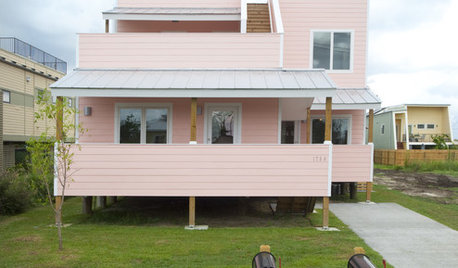










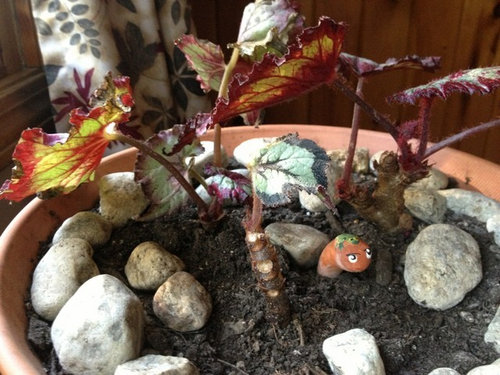
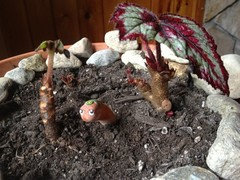
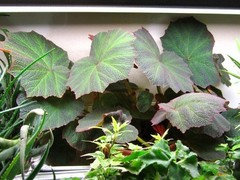

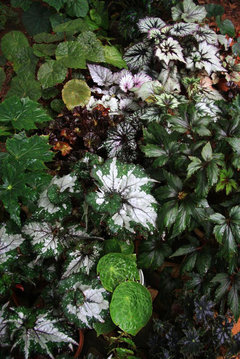
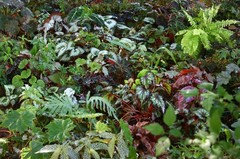
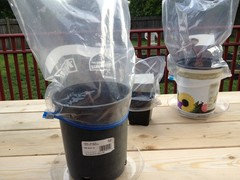
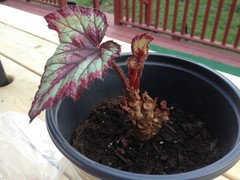
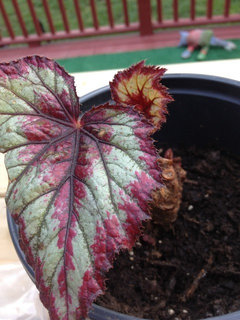
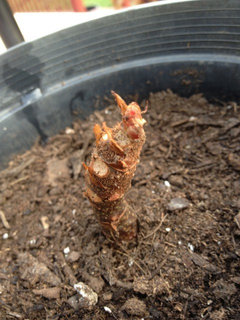
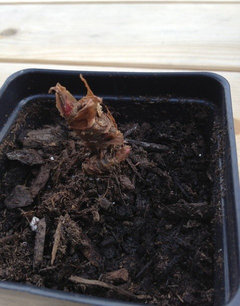


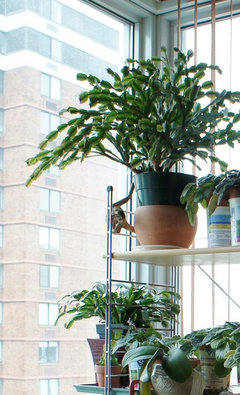
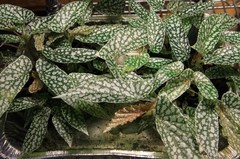
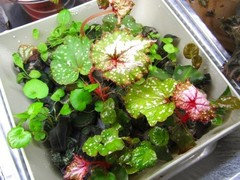
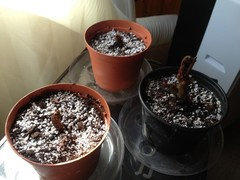
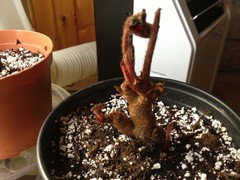




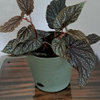
hc mcdole